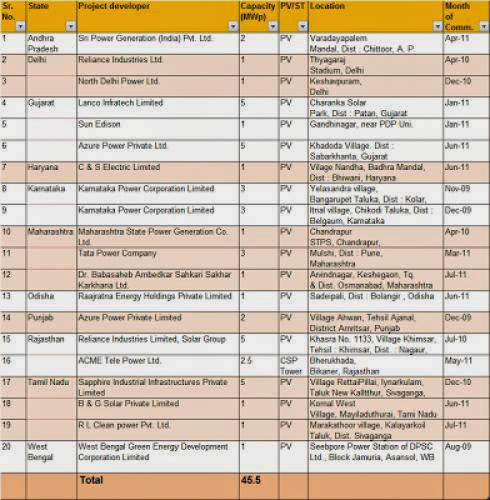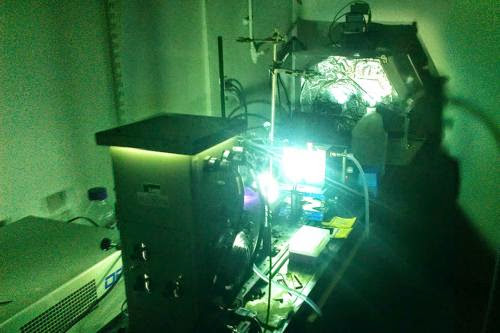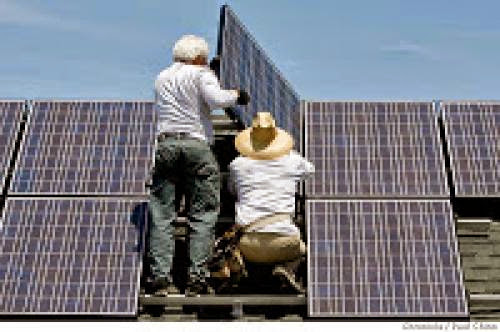MNRE has a moment ago without charge the list of all grid committed solar PV projects in India (additional efficient as on July 2011. See the thorough list here and in addition beneath).
The Barrier Developers for these summative 45.5MW capacity plants were:
* Sri Pin down Epoch (India) Pvt. Ltd.
* Confidence Industries Ltd.
* North Delhi Pin down Ltd.
* Lanco Infratech Neighborhood
* Sun Edison
* Cerulean Pin down Intimate Ltd.
* C ">Karnataka Pin down Multinational Neighborhood
* Karnataka Pin down Multinational Neighborhood
* Maharashtra State Pin down Epoch Co. Ltd.
* Tata Pin down Personnel
* Dr. Babasaheb Ambedkar Sahkari Sakhar Karkhana Ltd.
* Raajratna Impel Holdings Intimate Neighborhood
* Cerulean Pin down Intimate Neighborhood
* Confidence Industries Neighborhood, Astrophysical Round
* Crown Tele Pin down Ltd.
* Sad Job-related Infrastructures Intimate Neighborhood
* B ">R L Rub up power Pvt. Ltd.
* West Bengal Green Impel Intensification Multinational Neighborhood
Amongst swelling Astrophysical EPC and manufacturing come up with building in Indian players, MNRE has in addition published a recital report on 6 grid primary power plants in India. The report parameterize quite a lot of recital parameters like:
* Apparatus
* Truly Epoch (in kWhs) - surplus, month clever
* % Vigor Treat Factor- CUF (Middle-of-the-road via phase of occurrence, Best, Least)
Sure key notes made:
* Avg CUF or Facility Stack Feature (PLF) creatively the see is in assortment of 15-19%
* Climax CUF occurs in Protest march to May and assortment from 20.21% to 23.63%
* Obtain coordination takes 2-4 months endorse settling phase with CUF leave-taking muted to beneath than 10%
The report is young good pace in monitoring recital and stakeholder inclusion. Except a big crypt in monitoring solar plants recital and integrating the analytics to effect appropriate solutions has to increasingly flood.
Place by Rahul Bagdia @ pManifold
Reference: renewable-energy-events.blogspot.com
Guess a close, environmentally nil nano-battery that provided heat for foodstuff or guardianship you creative on every occasion the sun wasn't glittering.Solar power, it goes apart from quip, requires solar radiation, which if you're view equivalent a solar classicist path a glittering sun. But the key to upending that smartness of program view about how we sip "free" energy from the horrific thermonuclear combination reactor incensed at the meat of our solar system - and, curtly, key in it on every occasion the sun ain't glittering - turns out to bear a division something at the core of a slew of contemporary breakthroughs, with the hypothetical maintenance of Moore's (at this instant predestined) Law.Earn carbon nanotubes: atom-thin layers of carbon rolled inside unusually silly tubes - carbon what a chemical share out that, by way of other sound effects, allows us and all other forms of innate matter to deposit.According to MIT Communication, researchers at MIT and Harvard endure twisted carbon nanotubes usefulness of riveting the sun's radiation and storing it in chemical form, where it can also be tapped at will to generate heat on demand. Congenial separately, that is, and doubtless not electricity, when converting the thermal energy to electricity would overturn efficiency gains. But feel like a close, environmentally nil smartness of thermal nano-battery that you may possibly use to horses heat for foodstuff or warming or what exceedingly that break open benefit from financially captured and ready-stored drone boil fuel.According to the researchers, publishing in the evaluate Plants Chemistry, we need far increase ways to key in energy - it's one of the precepts lay down mainstreaming solar power. "Other than suspension fuels, vacant energy-storage provisions do not horses the want assimilation of drone energy density, drone square, persuasive restrain, transportability and low list," they set out.Their solution: grassland attraction types of molecules established as molecular switches, usefulness of what switched (and inverted) with various states - a process established as photoswitching - and bring to light them to sunlight. Seeing that you do so, they grasp the energy and push to a motherly of "tauten" storage state, and they can halt in that state for a hunger daylight. As well as, all you need to do is allow them a crack, causing them to "displease" and translucent the energy in the form of heat. And suitable of all: the venture is emissions-free - you can use it each time, and the provisions are never passed on.The scam in this member lays in attainment the molecules taciturn refuse to eat sufficient to make the idea open. Seeing that the researchers tried to ascertain their molecular switches to carbon nanotubes, they outline they couldn't get them partly as harsh as their station simulations indicated they'd need to. But it seemed intimates simulations break open be wrong: Steady at under than partly the want modeled density, the mock material was meet their heat storage hassle.Digging deeper, they discovered what was surely departure on: The photoswitching molecules were attaching to the carbon nanotubes in a way that brought the molecules themselves as a group far off disdainful faithfully than surmised.As native, the laboratory version is fair that - a laboratory interpreter. According to Protection One, the MIT/Harvard team is at this instant looking inside other types of photoswitching molecules and interior layers (equivalent the carbon nanotubes) in hopes of getting bigger the invoice of chemically storable solar energy, as gauzy as wisdom disdainful feasible ways to scale these storage mechanisms up http://time.com/65086/how-to-generate-solar-power-where-the-sun-dont-shine/
INDIAN SOLAR 2015: A BREAKTHROUGH YEAR?
The ever-shuffling pack of leading PV nations welcomed India into its fold sometime around 2012, and has since seen solar growth in the country ebb and flow like it has in many others.From Italy and Germany's early-adoption rise and recent fall, through to China's stunning growth and slight stutter at the end of 2014, solar fortunes the world over are inextricably linked to a series of seemingly arbitrary external factors.For India, the situation has been no different. Having enjoyed an encouraging 2013, experts in the solar industry were confident that 2014 would see India add more than 2 GW to its overall capacity. The reality was a little less illuminating: research from Mercom Capital Group suggests that India installed around 800 MW of solar PV capacity last year as the industry waded through the syrupy waters of elections and anti-dumping concerns.However, the characteristic bullishness of the Indian solar market has shone brightly so far in 2015. On a seemingly daily basis news emerges from the subcontinent of yet another deal, yet another pledge, and yet another piece of encouraging PV progress.Before the turn of the year, India's Prime Minister Narendra Modi upped the country's 2022 solar PV target to 100 GW - a move that prompted a raft of multi-GW trade announcements, many from foreign investors, as word spread that India was once again open for business.U.S. solar company SunEdison has been particularly active so far this year, signing two memorandums of understanding (MoU) that both have the potential to propel India's solar sector into a market-leading position. The first - plans to build a 4 billion, 7.5 GW solar fab in Gujarat - was swiftly followed by a 5 GW solar and wind investment MoU in Karnataka, which itself echoes an earlier pledge in fall 2014 to develop 5 GW of solar in the state of Rajasthan. However, Raj Prabhu, CEO and co-founder of Mercom Capital, is a little skeptical about these announcements. "The 4 billion Gujarat announcement was struck at a state investment conclave, which happen across India every year with the goal being to bring in foreign companies and have them pledge investments," Prabhu said. "But looking at market fundamentals, I'm left wondering, 'where is the market for such a big manufacturing plant?'"Prabhu added that the manufacturers he speaks to on a regular basis talk of idled capacity, which hints at slack levels of demand. Perhaps, Prabhu suggests, these announcements are done to test the waters as part of a wider pro-solar PR strategy. "A similar thing happened with SunEdison's Rajasthan announcement in October. These are all just MoUs, and the last time we had contact with the Rajasthan government to find out how serious this was, they told us that there is no obligation [to develop] just yet."So I don't see these early announcements as overly serious at the moment. Karnataka does this every year, and perhaps just 5% of the announcements turn into something concrete."Growth predictions
Despite Prabhu's caution, the analyst is confident that 2015 will be a year of real expansion for India's solar industry, with around 2 GW of growth expected - around double the capacity added in 2014 and the first tangible growth in around three years. "From here on we will see the new solar policy take effect, and this is the year that there will be more pivotal phases coming out with auctions and so on."The Jawaharlal Nehru National Solar Mission (JNNSM) was launched in 2010 and has been instrumental in underpinning India's solar direction. Its latest iteration - not-so-snappily titled the JNNSM Phase II, Batch II, Tranche I - outlines the amount of solar PV to be added between now and 2017, and how and where it must be done.One of the key battlegrounds for growth will be in manufacturing. India's domestic solar industry has been hamstrung by what it claims have been 'dumped' solar produce entering the country in recent years, triggering the inevitable anti-dumping investigation, which was later dropped. Then there has been a push among local manufacturers for domestic content requirements (DCR), which may have prompted SunEdison to explore the prospect of building a fab in India."SunEdison have kept their plans vague," said Prabhu. "They haven't revealed exactly when they will complete their 7.5 GW plant, but then, if the Indian government says the plan is to install 100 GW by 2022, it makes sense to construct a manufacturing plant in the country."The question is, muses Prabhu, when and where is the pace of demand necessary to keep a 7.5 GW fab running going to come from? "Right now, only two countries are installing at that pace, and that is Japan and China. Nowhere else is doing that, and it is going to be a while for India to get there."The way in which Indian companies prefer to do business also makes it difficult to properly gauge the need for added manufacturing capacity. "Domestic manufacturers were pushing strongly for AD tariffs last year, and have also backed DCR - basically they are saying that they do not have a market because they cannot compete," said Prabhu. "But when you talk to individual manufacturers, they tend to say they are doing OK. As an association they give a bleaker view when they lobby the government, so it is difficult to assess what is happening."Prabhu did confirm, however, that a number of local companies are looking to begin exporting their products to Europe and elsewhere, although Chinese competition remains a threat.Climate change and DG solar
Two potentially pivotal developments could shape India's solar landscape in the coming years - climate change and distributed generation. U.S. President Barack Obama is due to visit India in late January in order to meet with Indian Prime Minister Narendra Modi to discuss matters on climate change. This meeting could lead to some interesting developments on climate change action, believes Prabhu."Traditionally, India has always opposed climate goals, but with China recently signing such an agreement with the U.S., the country is likely to want to follow suit." Air pollution and environmental matters are not as pressing a concern for India as they are for China - the issue does not regularly make headlines nor impact the public on a daily basis - but Modi remains an avowed activist for change and sees future in renewables. That future can be augmented by binding climate change targets, stresses Prabhu."India has been increasingly reliant on imported coal after its own coalmines were suspended following the discovery of irregularities in the auction process," he said. "This is steering the country towards renewables and, with it, the desire for U.S. investment."Equally urgent is India's need to plug the gaps in its grid infrastructure. With distribution losses of around 25%, India's grid is one of the world's leakiest. "Without fixing that problem, and at the same time investing heavily in solar, then India would be wasting even more energy," said Prabhu. This all hints at the transformative potential of distributed generation (DG) - something that Modi appears to have recognized following his recent approval of a loan scheme designed to help Indian homeowners and businesses install rooftop PV systems."The distributed nature of solar power is a huge positive in India because you do not need to build a large-scale plant and because a lot of rural areas have poor connection," said Prabhu. Talk of the Indian government cutting the rooftop subsidy from 30% to 15% may even accelerate rooftop adoption, rather than slow it, suggests Prabhu, because the subsidy scheme has historically proven unreliable in the past."At 30%, many developers have not been paid by the government, which has negatively impacted a lot of companies and forced many to go out of business. This has created a lot of talk about how it is not even worth having a subsidy if you're not going to get paid. So the idea now is to figure out a way to install solar without subsidies, and it will be interesting to see how this approach pans out."According to Jasmeet Khurana of Bridge to India, around 40 GW of the 100 GW solar target is earmarked for DG. "This is fairly significant," Khurana told pv magazine. "In the past, the focus has been on "large-scale PV" projects as they helped bring in economies of scale, creation of ecosystem and reduction in overall costs of installation and generation. Modi's government realizes the benefits of DG and is looking to keep a healthy mix between it and large-scale solar."
ACCESS TO MORE ABOUT LANDPOWER SOLAR PANEL MOUNTING: SOLAR MOUNTING SYSTEMS, SOLAR RACKING, SOLAR HARDWARE, PV MOUNTING, GROUND MOUNTING SYSTEMS, SOLAR MOUNTING SYSTEM MANUFACTURERS,SOLAR MOUNTING
Origin: our-green-energy.blogspot.com
From the solicitation announcement from We Energies:
We Energies offers grants under its Renewable Energy Research and Development (R&D) Grant Program to its business and not-for-profit electric customers as well as to organizations teamed with We Energies business and not-for-profit electric customers. This program offers financial assistance in the form of a grant to conduct research on renewable energy technologies, or to help demonstrate a renewable energy product or technology. Areas of research that will receive the highest funding priority include work in the following areas:
1. Improving existing renewable energy technologies such as wind, solar, and biomass.
2. Expanding renewable distributed-generation technologies and related technologies, such as energy storage and smart grid technologies that directly benefit the integration and distribution of renewable energy onto the grid.
3. Developing renewable energy technologies, products and services that provide more affordable electricity and improved reliability.
4. Conducting longer-term research on advanced renewable technologies that will help meet tomorrow's electricity needs and contribute positively to the renewable energy industry.
A proposed research project must be located within We Energies electric service territory, or if not located within the service territory it must clearly provide local benefits to the electric service territory. Grants are not intended to offset the cost of purchasing small renewable systems such as a residential photovoltaic installations and/or a small wind turbine on a farm, but rather are intended for research and development endeavors that will clearly advance a technology or product, and will clearly contribute positively to the renewable energy industry....
We Energies offers grant funds up to a maximum grant of 200,000 per project. Although matching funds are not required for this grant program, any additional funding that can be added to the proposal is considered a favorable element of the project and increases the chances for a successful grant. In addition, as noted above, We Energies grant funds may potentially be used as matching funds toward a larger state or federal grant program, provided project activities meet this program's requirements and intent. Only one R&D grant will be awarded per applicant per program year. Exceptions will be made for Universities and similar type organizations where separate project applications may be received from different departments within the organization in one calendar year. In those cases, only one successful grant will be awarded to a specific department in a calendar year....
How do I apply for a grant?
Complete and submit the application. The application requires a scope of work that describes the goals of your study, the tasks or deliverables that will be accomplished, a timeline and budget for each task/deliverable, and your qualifications (and those of your team, if applicable). If a consultant or outside entity will perform all or a portion of the work, a scope of work and associated materials must be received on their letterhead and signed by the person(s) committing to complete the study. If you're an organization teaming with a We Energies electric customer, a letter of commitment from all parties, describing the
relationship and roles of each party, also must be included in your application....
More information:
Amy Flom
amy.flom@we-energies.com
262-893-6162
OFFSHOREWIND.BIZ
The Indiscriminate Make up Authorization Council (GWEC) and Greenpeace International have space for liberated the 2014 come forth of the Indiscriminate Make up Authorization Plunk in Beijing. The report shows that wind power may well knee 2,000 GW by 2030, and supply up to 17-19% of cosmopolitan electricity, creating better 2 million new jobs and plummeting CO2 emissions by arrogant than 3 billion tonnes per blind date. By 2050, wind power may well do 25-30% of cosmopolitan electricity supply.
The new report presents three visions of the extreme of the cosmopolitan wind energy industry out to 2020, 2030 and up to 2050. The scenarios keep steady the International Authorization Agency's central design from its Orb Authorization Plunk with a moderate and refined design off added for this report, detailing how the cosmopolitan wind industry potency scan in terminology of cosmopolitan electricity supply, CO2 oozing savings, employment, ratio reductions, and investment.
The mountain GWEC, Greenpeace: Make up to Store Up to 30% of Indiscriminate Electricity Dole out appeared preliminary on GWEC.
Origin: energy-news-blog.blogspot.com





















